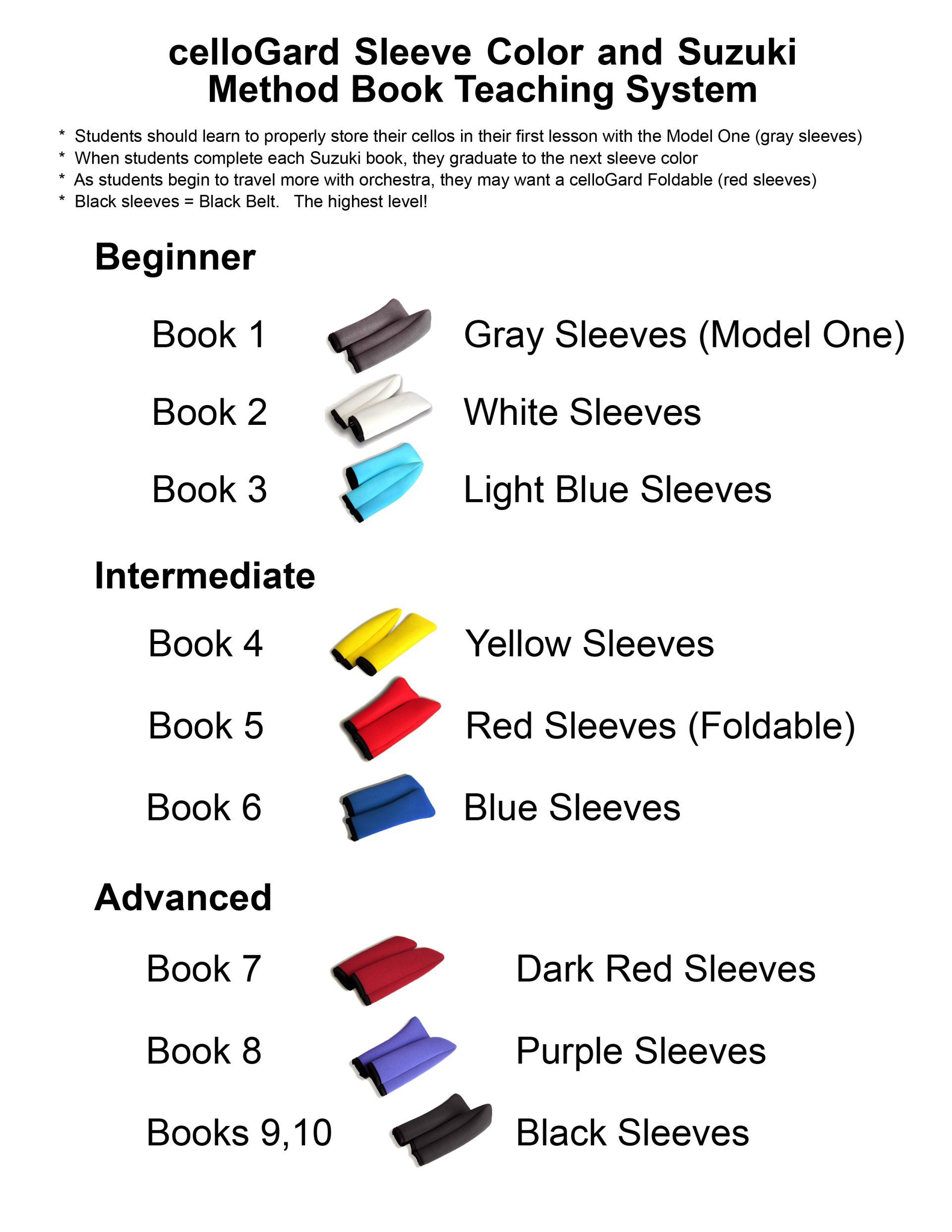Suzuki Teaching Tips
When I was growing up, cars didn't have seat belts and bike riders didn't wear helmets. Today, of course, they are common items, but it took a long time for people to change, and it was mainly due to the parents and their young kids that change came about.
It is a similar story with the celloGard. Here is a safety stand that can save a lot of heartache, time and money by preventing accidents. It is highly effective, inexpensive and its easy to use. But experienced cellists are unfamiliar with it and tend to ignore it (unless they have personally experienced a bad accident). They have never seen one before, don't know what it is or how it works, and don't think they need one after years of playing. (Wrong).
Its the parents and kids that are just starting out with the cello that readily understand the celloGard. Whenever I begin with a new student, I teach them how to use the celloGard along with all the basics - using the fine tuners, extending the end pin, tightening the bow, putting on rosin, etc.
Learning to put the cello on its side on the floor in a celloGard is always part of the first lesson. The kids and the parents understand it right away. It's like buckling up the car seat or putting on a bike helmet. Just another common sense safety procedure that they learn as part of growing up. (Like, "Don't cross the street when the light is red!").
Here is my typical teaching dialog:
"If you're taking a break while playing, put the cello down on its side in the celloGard. Don't put it on the floor on its back. Don't lean it against the chair. If you're done playing for the day, put on the case, and put the cello down on its side in the celloGard. Don't stand it up in the corner. We have earthquakes. (In California). Or if not an earthquake, then Rover the dog or curious little brother will always find a way to topple it over!"
At the end of her first lesson, maybe that 5 year old student still can’t play Lightly Row, but she has already learned something easy and important about proper cello care and safety. And she is proud and happy to show her parents the RIGHT way to take care of her new cello!
Colored Sleeves
As a teacher with many years of experience, I know that students love structure and rewards as they progress. The colored sleeves provide a natural system for this.
When a student masters an important lesson or skill, I reward them with a new set of colored sleeves to put on their celloGard.
I allow my students choose which colors they want next, until they finally have collected the entire set. But some teachers prefer to use a system similar to that used with colored karate belts, where each color indicates the student’s level of achievement.
For teachers and students who like to use the popular Suzuki Method teaching books, I suggest the following ranking system.
Beginning Level Intermediate Level Advanced Level
Book 1 Gray Book 4 Yellow Book 7 Dark Red
Book 2 White Book 5 Red Book 8 Purple
Book 3 Light Blue Book 6 Blue Books 9-10 Black
The sleeves are easy to put on and take off, and the students love playing with the different colors. So make them part of the fun.
celloGard Foldable
As the students grow older and begin to participate in the school or youth orchestras, there is more travel involved. This is when it makes sense for them to buy a celloGard Foldable. The celloGard Model One
has a permanent place on the floor at home, and the Foldable
is stored in the cello case or the music bag – so that it is always ready to go and not forgotten and left behind.
Both models share the same set of interchangeable sleeves. Both are easy to use and function in exactly the same way. And there is a practical need for both models.
It is similar to music stands. There are both portable and non-portable music stands. Each type has its advantages and disadvantages. I own and use both types - a large, stable stand for my home studio, and a small, portable stand to take to rehearsals or performances.
The celloGards function in a similar way. The Model One is for the home, the Foldable is for travel. Every safety conscious cellist should own one of each. It makes perfect sense, doesn’t it?
I hope my teaching experiences give you some idea of how you too can grow your teaching practice with celloGard products. Seat belts and bike helmets didn’t happen by themselves. It took a lot of good teaching and coaching along the way too.
Be safe, Not Sorry!
Bob Ng
Cellist,
Berkeley, CA



























